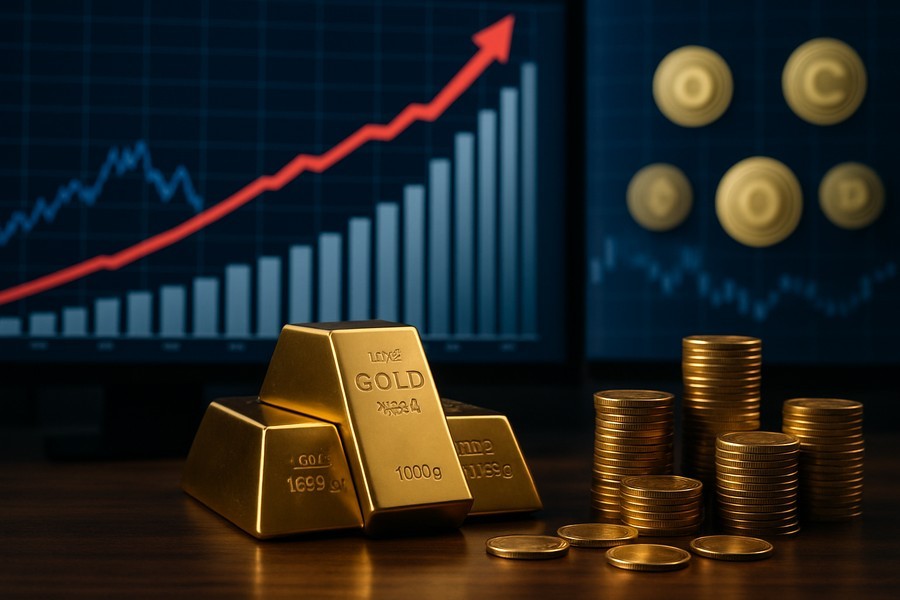
U.S. Debt Crisis: The Rising Value of Gold and Non-Fiat Currencies
Renowned financial expert Ray Dalio recently expressed his thoughts on the increasing value of gold and non-fiat currencies, especially in the context of escalating global debt. His argument centered on the notion that these alternative forms of currency could serve as more reliable wealth repositories, mainly due to the risk of devaluation that major currencies currently face.
The Unsustainability of U.S. Debt
At a recent global forum, Dalio voiced concerns about the spiraling U.S. debt, which he described as being "unsustainable". Given the excessive government spending and mounting debt, the financial stability of the world's leading economy hangs in the balance. This precarious situation, he warned, could jeopardize the country's monetary system.
But the U.S. isn't alone—it shares this fiscal risk with other countries like France, Japan, and China. Governments worldwide seem hesitant to curb their spending and borrowing, which only intensifies the appeal of gold and non-fiat currencies as more secure stores of value.
Investor Advice: Diversification is Key
Dalio recommended that investors should consider diversifying their assets and allocate around 10% of their portfolio to gold. The value of the U.S. dollar, and other major currencies, has depreciated this year, while gold's value has remained stable or even increased. In fact, Dalio highlighted that gold is now the second largest reserve currency worldwide.
Supply and Demand Imbalance
Years of overspending have left the U.S. government drowning in debt—nearly six times the revenue it generates. Dalio estimates, without specifying a timeline, that the government might need to sell an additional $12 trillion in debt to handle its $2 trillion deficit and $1 trillion in interest payments, as well as to roll over $9 trillion in maturing loans.
However, the global market's demand for U.S. debt doesn't match this supply, leading to a significant imbalance. Dalio had suggested reducing the fiscal deficit to only 3% of the country's Gross Domestic Product, but politicians from all sides have been reluctant to address the debt issue. This imbalance and governmental reluctance are only expected to exacerbate the national debt, which could increase by an estimated $3.4 trillion over the next decade due to a major tax-and-spending bill.
The Future of the U.S. Dollar
Despite these concerns, Dalio believes that the U.S. dollar will continue to serve as a dominant 'medium of exchange'. However, its shine might be somewhat dimmed due to the rising prominence of the Chinese currency in global trade.
These insights underscore the need for prudent financial management and diversified investments. With the mounting global debt crisis and the potential devaluation of major currencies, gold and non-fiat currencies are gaining increased importance as reliable stores of value.
